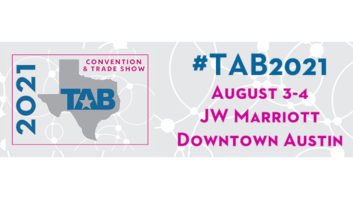Rich Rarey’s column on “Happy Analog Holidays” (RWEE, Dec. 14) got me thinking about broadcasters over-reliance on IP-based remote broadcast devices as they eschew the tried-and-true analog methods that have served the industry reliably over the years.

When it comes to broadcast remotes, I still do the majority of mine with a trusty Marti system. Yes, it takes time to set up the antenna, run the antenna cable and make sure all trip hazards are mitigated, but for pure reliability and relatively high-quality audio, the Marti is still an unmatched standard.
Over the years, I’ve used nearly everything available to do remotes. Telephones with QKT couplers, analog and digital cell phone interfaces, ISDN, POTS codecs (not too many analog phone lines left in businesses anymore) and packet loss, retraining, buffering and dropping of the line are becoming a big problems. Today the latest “flavor-of-the-month” are the IP-based codecs. I don’t believe these devices are all they are cracked up to be. Unless you’re a big-market station or a major-league sports franchises providing a dedicated, wide-pipe Ethernet connection for the broadcasters, these devices just don’t function reliably for a three- or four-hour broadcast.
Our station broadcasts minor league sports, small college and high school football and basketball, and our experience has been that these venues cannot and will not provide dedicated internet service to the broadcaster. Additionally, there isn’t enough revenue generated by these events for the radio station to pay for its own “pipe” at the many venues we broadcast from. Having to rely on an internet “hot spot,” venue-provided “Wi-Fi” or the “air-card” that comes with IP-based device is a disaster waiting to happen.
For example, we tried broadcasting a high school football game from the heart of Silicon Valley last fall. The venue was in Milpitas and was far out of range of our mountaintop RPU repeater on Fremont Peak in San Benito County, so we had to “bite the bullet” and use one of these newfangled IP codecs.
Now one would think that of all places on the map, Silicon Valley would have the most robust public Wi-Fi available anywhere. Not so. We tried using the IP codec with not only the venue’s Wi-Fi, but we also tried two different wireless hot spots (AT&T and Verizon) and the service worked so poorly, we had to revert to using FaceTime audio for the broadcast (fortunately, the play-by-play guy had an iPhone as did the board operator at the radio station).
The audio wasn’t great but it was acceptable, and far preferable to putting raw cell phone audio on the air.
This little experience got me thinking that as broadcasters we sometimes place too much faith in “the newest thing” and forget about the “old reliables” that have served us so well.
To my fellow broadcasters: Analog is not a dirty word. If you have a Marti system gathering cobwebs in storage, think about putting it back in service. It doesn’t cost very much to have these units reconditioned and tuned up (maybe a few hundred dollars) and the ROI is much higher than nearly anything else you can employ.
I also like the fact that when using an RPU, the broadcaster owns the transmission and receive path from end to end. It’s the original wireless remote broadcast system! We don’t worry about internet outages, packet loss, phone line problems, etc. that seem to plague newer technologies. How can I be 100 percent responsible for the success of my remote broadcast when I don’t own, control and maintain the pathway between the remote site and the radio station?
I’m not saying that RPUs are perfect and are the answer for everyone. But I believe they are still an important, necessary and relatively inexpensive tool for bringing high-quality program audio to our listeners.
Mark Carbonaro
Broadcast Engineer
Monterey, Calif.
Comment on this or any letter or article. Email [email protected].







